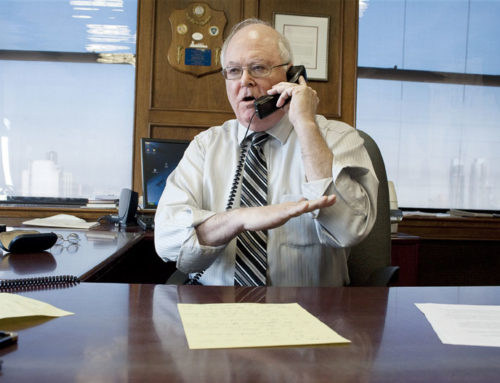FROM THE PRESIDENT’S DESK
William Donohue
One might think that in this day and age of multiple news sources—newspapers, broadcast TV, free tabloids, radio, cable, pay-per-view, magazines, the Internet—that it would be harder for faulty information to survive without being refuted by a reliable source. This has not been my experience.
Quite frankly, the central problem is a lack of reliable media outlets. Moreover, there is the “follow-the-leader” syndrome: the big, established media, e.g., the New York Times, still set the tone, and others blithely get in line. Here’s an innocent example. A while back, there were several stories on David Letterman’s sexual relationships with staffers. I held on to them for only one reason: they offer a textbook case on what’s wrong with the media.
On October 2, 2009, the New York Times posted on its website a story about “the intensely private Mr. Letterman.” In updated stories that appeared later that day, the New York Daily News, the Arizona Republic and London’s Evening Standard spoke about “the intensely private Letterman.” The next day, Alessandra Stanley, a columnist for the New York Times, wrote that “Mr. Letterman is an intensely private celebrity.” So “intensely private” is he that on October 5, the print edition of the Times ran its initial Internet story labeling him “intensely private.” On the same day, the Associated Press, which feeds news stories across the nation, chose to call the CBS host “the intensely private Letterman.” The next day, CNN showed its originality by referring to him as “the intensely private Letterman.” People magazine, in its October 19 edition, made sure it did not err when it described Letterman as “intensely private.”
Whether there is something at work here besides the “follow-the-leader” syndrome, and/or just plain laziness, is an interesting issue, but it is not what concerns me. What bothers me is how lacking in independence many in the media are. This is especially problematic when faulty information is presented; it tends to get repeated.
The sexual abuse issue is back in the news, and with it are some rather amazing claims. Anyone who is truly interested in justice clearly makes a distinction between an accusation, a credible accusation and a finding of guilt. Unfortunately, many reporters cite information found on websites that simply list accusations—not convictions, not even substantiated accusations—and then pass it off as if the data were uncontested.
A few years ago, a woman reporter interviewed me in my office about this subject. She was a bit testy, wanting to know why all dioceses didn’t print the names of accused priests (not credibly accused ones or those found guilty). I asked her for her boss’s name and his phone number. She was perplexed and asked why. I said I was going to accuse her of sexually harassing me. She was beside herself. She really went nuts when I told her that her name should immediately be posted on her company’s website as an employee accused of sexual harassment. She got the point and the interview proceeded smoothly. By the way, I repeated this story recently to another female reporter who was acting up. She quickly fell mute.
Those who want to malign priests like to drop the figure 100,000. Here are three quick examples.
You all know who Father Cutié is—he is the former Catholic priest and TV personality (“Padre Oprah”) who was caught having an affair with some gal and decided to bolt. Then he became an Episcopal priest and made the rounds on TV whining about the vow he violated, namely celibacy. He likes to say that he is one of 100,000 priests who quit to get married. We challenged him on this figure and he was not a happy camper. He was even less happy when we pointed out that a more realistic figure, culled from a Jesuit priest in Rome, is 57,000.
John Walsh, the “America’s Most Wanted” investigator, told CNN that 100,000 victims of priests showed up in Rome last fall looking for a meeting with the pope. We proved to CNN that the real figure was 100, and they corrected the record.
Washington Post columnist Richard Cohen recently wrote that “well in excess of 100,000” minors have been abused by a priest since 1950. The real figure, as we demonstrated, is between 10,000 and 12,000.
It’s not easy getting the media to correct these figures. And once the bogus numbers are out there, they just get picked up over and over again. It soon becomes a media mantra.
In fairness to TV talk-show hosts (as opposed to reporters who have time to fact-check their stories), they can’t possibly know what the accurate figure is on any given subject; thus, those who bandy about bogus numbers are rarely challenged. The problem, in these cases, are the so-called experts.
That’s the difference between those who mistakenly float information (what is called misinformation), and those who intentionally distort information (disinformation). The former are forgivable; the latter are a disgrace.






